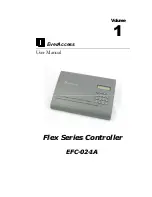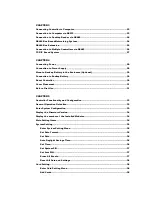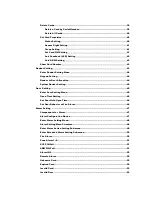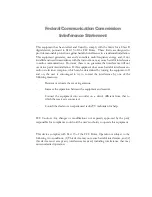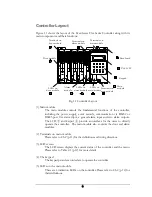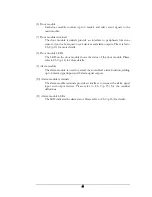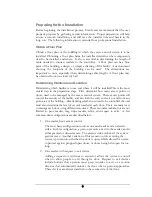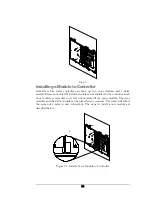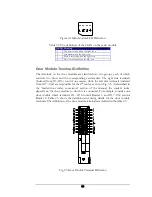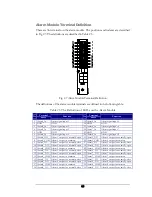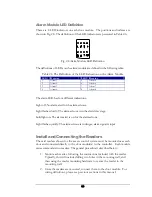
7
Fig. 1.2 A Common Door Configuration with Entry Reader
3.
Two readers, entry and exit access control
If additional security is needed at a particular door, or if the administrator
needs a record of the time and date that people enter AND exit a door.
Adding a second reader on the secure side of the door will require people
to present a card to exit as well as enter. This scenario provides the
added security benefit of allowing the system to control who can enter,
and who can exit. It also allows the administrator to control when
people can enter and exit.
Scenario 1 and 2 require one reader. Scenario 3 requires two. Each door module
on the EverAccess controller can control two readers. Therefore, scenarios 1
and 2 allow one door module to control two doors. Scenario 3 requires one
door module for each door. This is important to consider when choosing the
appropriate number of modules and readers.
Determining System Structure as well as the Number of Controller
and Modules
Determine how many controllers are needed, and whether an Ethernet interface
is required.
1.
Each EverAccess controller can accommodate up to 8 card readers. If
the system to be installed requires more than 8 readers, additional
controllers are necessary. These controllers can be connected to the
system as described in chapter 4.
2.
If one or more controller is to be installed at a different location than the
system computer is to be installed, an Ethernet interface is required to
connect over the internet. An Ethernet interface may also be used in
locations at which the controllers are installed a long distance away from
the system PC. Please refer to chapter 4 for more details on installing the
Ethernet interface.
Entry Card
Readers
Door
Sensor
Door lock
Additional
Power Supply
EverAccess
EXIT
V+
V-
Request-to-exit
Summary of Contents for EFC-02-1A
Page 73: ...65 Notes...
Page 74: ......

